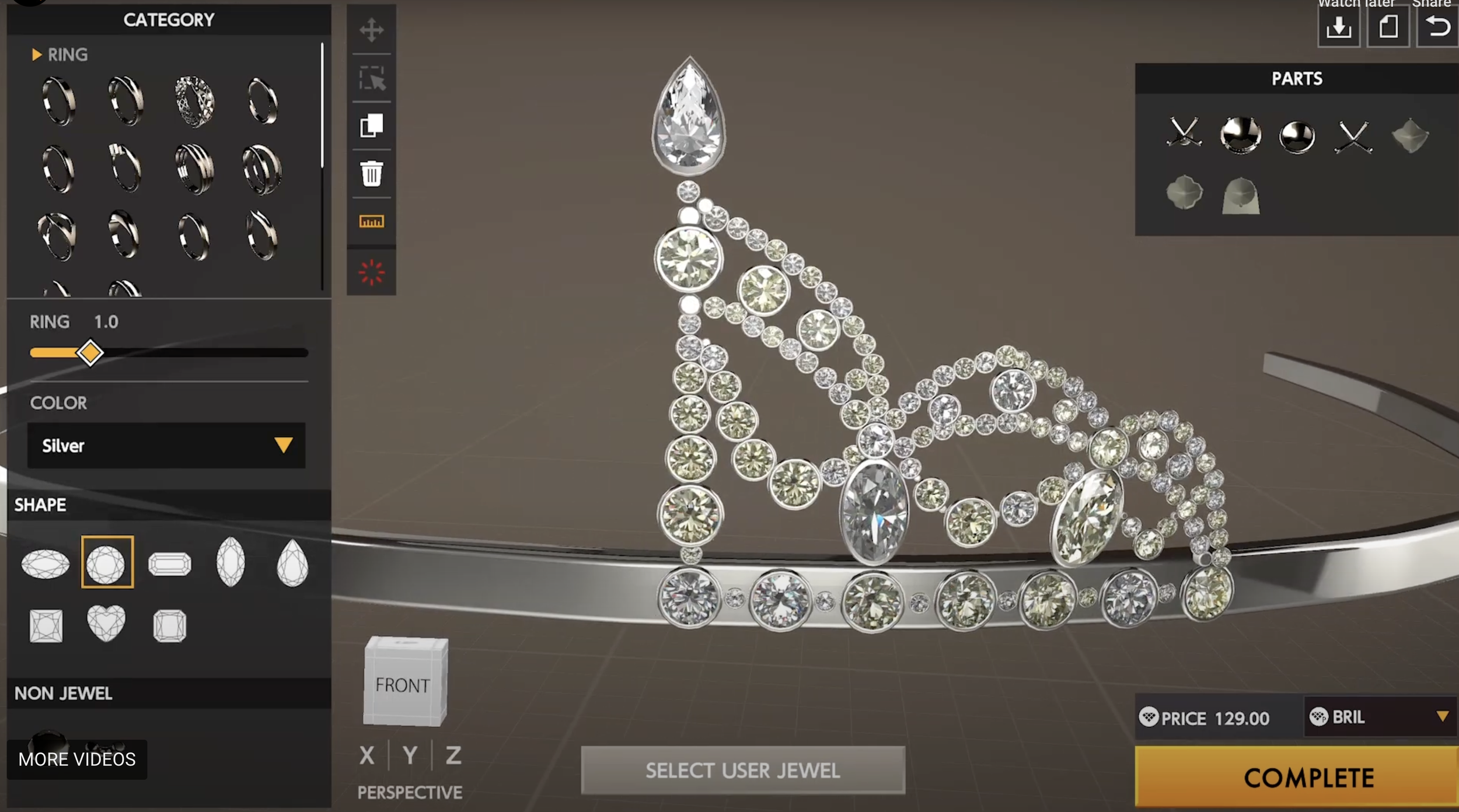Brilliantcrypto’s Jewelry Workshop: Crafting the Future in a Changing Jewelry Landscape
The jewelry world is undergoing a quiet but significant shift. In recent months, the Gemological Institute of America (GIA) has adjusted its approach to grading lab-grown diamonds, a move that reflects a wider acceptance of alternatives to mined stones. At the same time, headline-making auctions of rare natural diamonds, such as Sotheby’s 55.22-carat Estrela de Fura ruby sale, highlight the enduring cultural and economic value placed on exceptional gems. For younger generations of consumers, the conversation around jewelry is becoming less about tradition and more about traceability, originality, and the story behind each piece.
GLITCH Magazine’s Fernanda Ondarza Reimagines Sotheby’s Ruby’s with AI as digital jewelery.
This redefinition of value is also playing out in digital spaces. Brilliantcrypto, a blockchain-based gaming platform owned by COLOPL, has introduced the Jewelry Workshop - a feature that brings aspects of gemology and jewelry design into an interactive, online environment. Here, users can mine virtual gemstones, refine them, and design finished pieces such as rings, necklaces, earrings, and bracelets. These creations exist as tradable digital assets, their details and provenance recorded on the blockchain.
Rather than positioning itself purely as a game, the platform integrates elements familiar to jewelry-making - cutting, setting, and design choices - into its digital mechanics. Players can exchange their designs using BRIL or POL tokens within an in-game marketplace, creating an ecosystem where the currency of exchange is creativity supported by verifiable ownership records.
The connection between traditional jewelry and Brilliantcrypto’s virtual approach is not literal, but conceptual. The emphasis is on process and authorship: mining a resource, transforming it into something wearable, and offering it to an audience. In this way, the Jewelry Workshop mirrors certain real-world values - craftsmanship, scarcity, and the ability to trace origin - without claiming to replace the physical craft.
From August 1 to 18, Brilliantcrypto is hosting a jewelry design contest in partnership with Digital Fashion Week XYZ, judged by Fernanda Ondarza (GLITCH Magazine), Sidharth Vohra (Matic Studio), and Clare from DFW XYZ. The competition invites participants to submit original jewelry concepts, with the top five designs being recreated within the Jewelry Workshop and showcased during Digital Fashion Week’s runways in New York (September 12) and London (September 18).
Prizes include:
Top 5: $200 in BRIL/POL tokens + digital runway showcase
Top 10: $100 in BRIL/POL tokens
All rewards are transferred directly to winners’ in-game wallets two weeks after the announcement on August 20. Contest guidelines allow up to 100 gemstones per design, with creative vision taking priority over gem quality. Designs selected for in-game production may be adjusted based on gemstone availability or in-game market factors.
The competition has already gained visibility through creators in the GLITCH Creator Network, including Milena Tiger and Karim Bouziane, both known for their work at the intersection of fashion and technology. Their posts have explored the interface of the Jewelry Workshop, the process of combining virtual gemstones into finished designs, and the possibilities for wearable digital artifacts.
Milena’s shared designs focus on the playful flexibility of the tool, while Karim’s emphasize how arrangement and proportion can lend elegance even in a virtual format. Both underline that while the Jewelry Workshop is a game feature, it functions as a creative tool in its own right.
Brilliantcrypto’s “Proof of Gaming” system rewards players for time spent mining and crafting, enabling an in-game economy that encourages participation without relying solely on speculative trading. Gemstones can be reclaimed from finished jewelry at a reduced cost, supporting iteration and experimentation in design.
While this model operates entirely in the digital realm, it reflects certain cycles seen in the physical jewelry industry - resource extraction, transformation, and recirculation - albeit in a form that is accessible to anyone with an internet connection.
The Jewelry Workshop is one example of how game mechanics and blockchain can be adapted to explore the creative side of jewelry, offering a space where making, trading, and collecting are not tied to physical materials. For players, it’s a chance to design and share; for designers, it’s an opportunity to test ideas in a new format; and for collectors, it’s a way to engage with digital artifacts whose provenance is secure and transparent.
With the Digital Fashion Week contest underway, the coming months will show how these virtual designs resonate both on-screen and on the runway. Whether the Jewelry Workshop becomes a mainstay of digital jewelry-making or simply one chapter in the evolving relationship between craft and code, it reflects a wider cultural moment: one where the meaning of “making” continues to expand beyond the physical workbench.
More about the Jewelry Contest, visit @jewelry.workshop
Written by GLITCH Magazine









